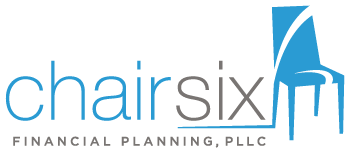
29 Nov Six Tax Moves to Make Before Year End
The year is winding down, which means it’s time to start preparing for tax season. The Tax Cuts and Jobs Act has been in effect since January, which has made planning a bit more complicated than usually. But there is still time to make some savvy moves to lower your tax bill and improve your overall situation. Here are some steps to take right now:
1 – Pay attention to your withholding
The IRS and Treasury have updated the withholding tables, which (along with Form W-4) are guidelines for an employer to ensure that the right amount of income tax is withheld from your paycheck. Too much withholding is—in essence— an interest-free loan to the government, and not enough withholding will cause you to owe the balance along with possible penalties and interest. Now is a good time to go over your pay stub and do a tax projection to see where you are. The new tax law made numerous changes to your tax liability for 2018. The fewer surprises in April, the better.
Also, if a portion of your income is from self-employment, investments, Social Security, or annuities or retirement plans, then you may need to make estimated tax payments. The 4th quarter estimated is due January 15, 2019. By now, you should be able to get a pretty good idea of what of your tax liability will be for 2018 and determine whether an estimate is necessary.
2 – Maximize retirement plan and HSA contributions (and coordinate RMDs)
Savers with extra cash can reduce their tax bill by maximizing their retirement plan or HSA (health savings account) contributions. It’s nearly always a good idea to first take advantage of a company match with an employer-sponsored retirement plan. In some instances, it may make sense to then maximize an HSA contribution before going back and maximizing a retirement plan contribution. Taxpayers should consider their current tax rate and future tax rate to decide whether forgoing a tax-deductible retirement plan contribution for an after-tax (i.e. Roth) contribution is the best way to go.
Also, if you are over the age of 70 ½, you need to correctly determine your required minimum distribution (RMD) for 2018 (or, if you turned 70 ½ in 2018, whether it makes sense to hold off until April of the following year to make your RMD). The penalties for not correctly making an RMD are quite stiff (50%!), so take some time and make sure to get it right. If you’re charitably inclined, consider making a qualified charitable distribution from an IRA to satisfy your RMD requirements.
3 – Tax-loss harvesting
Take advantage of the recent market volatility by realizing losses in a taxable account. Such losses can be used to offset any capital gains. $3,000 of net capital losses can be deducted on your tax return– any remainder must be carried forward to future years. Just be sure not to buy back your stocks or bonds within 30 days of selling, otherwise the sale is considered a “wash sale” and the loss cannot be recognized.
4 – Managing itemizing
The Tax Cuts and Jobs Act increased the standard deduction, so most tax payers will no longer be itemizing. Unless the total itemized deductions exceed $12,000 ($24,000 for marrieds), none of the itemized expenses will reduce your taxable income. If you are on the bubble, consider bunching your itemized deductions into a year in which you will get a tax benefit. For example, make two or three years’ worth of charitable contributions before year end, perhaps through a donor advised fund, to itemize this year, then take the standard deduction in the years in which you won’t be making a donation. You can also try to bunch property tax payments and mortgage payments (by paying January 2019’s payment in December 2018.)
5 – Make the most of your business deductions
If you’re self-employed and report your business income on a cash basis, consider paying some of next year’s business expenses now to claim a deduction in the current year. Prepaying insurance, webhosting, or other expenses (even with a credit card) can be a good way to lower your tax bill in 2018. Also, the new tax law made expensing of automobiles used for business much more tax-payer friendly.
6 – Review your beneficiary designations
While reviewing your year-end finances, it’s a good idea to revisit your beneficiary designations. It’s not necessarily a tax strategy, but family dynamics change during the year due to marriage, divorce, and birth. Staying current with your beneficiary designations will ensure that future distributions mirror your desires at your death.
If you would like some help with your year-end finances and tax planning, consult a CPA financial planner today.
_____________________________________________________________________________________
Originally posted 11/29/2018



No Comments